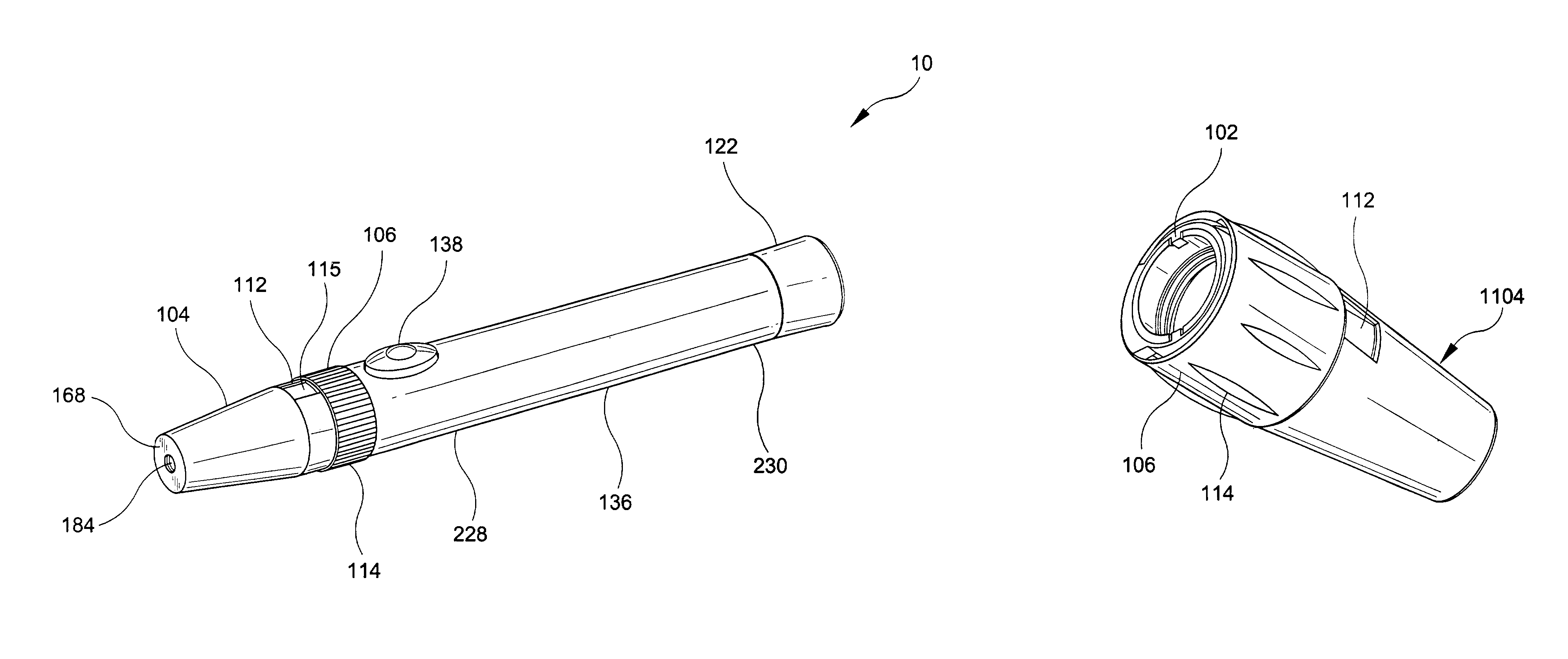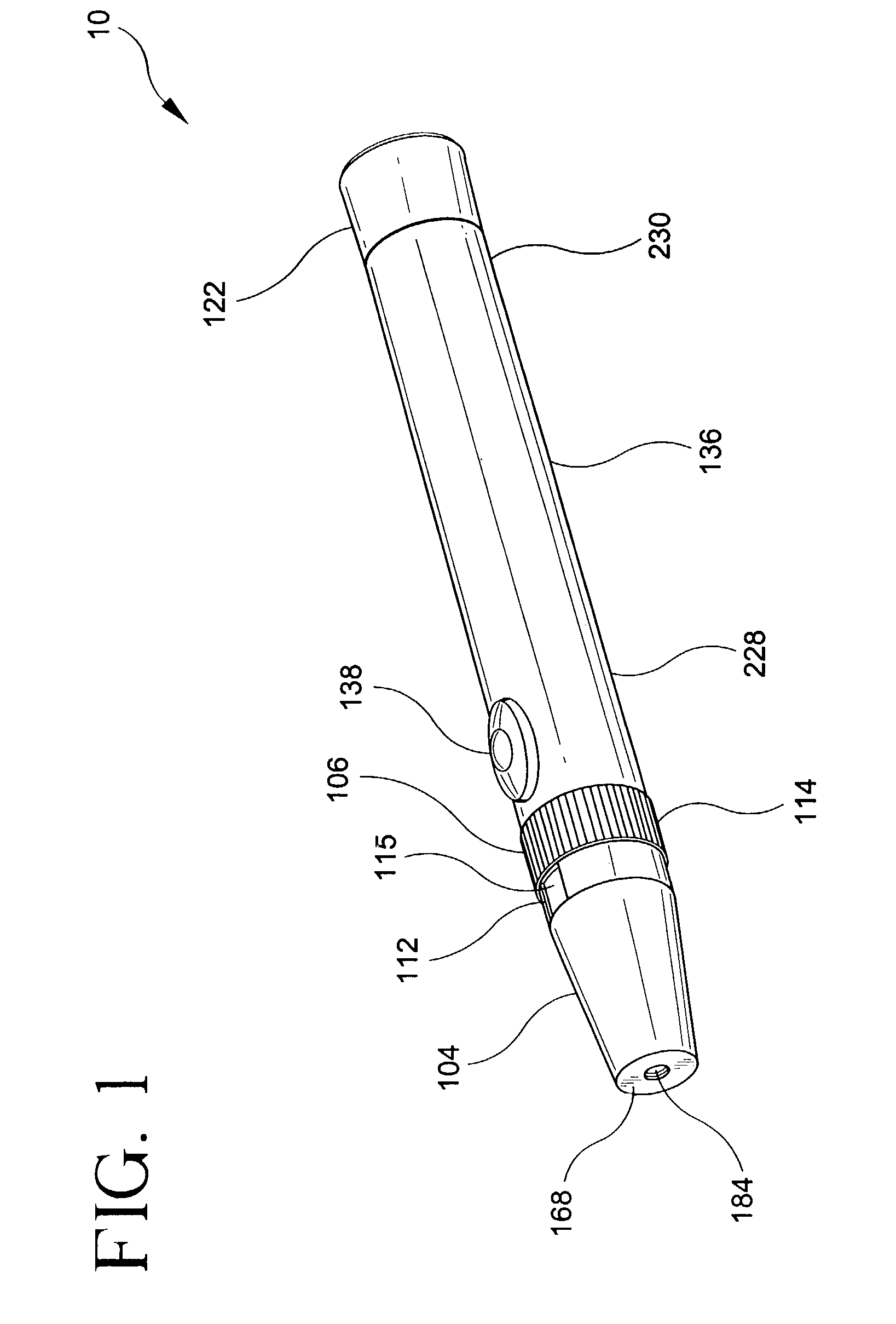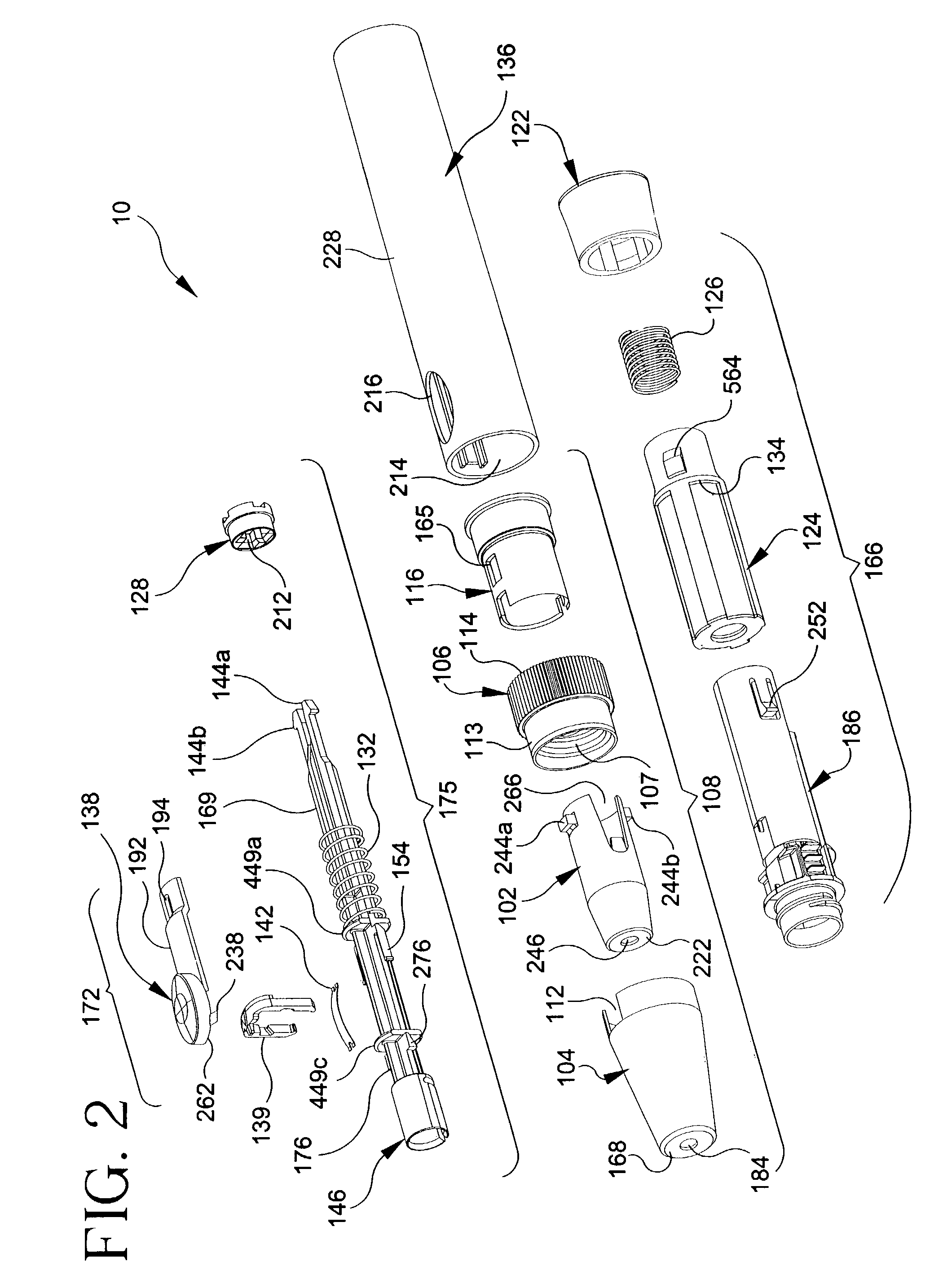Lancer
a technology of lancet and guide member, applied in the field of lancet, can solve the problems of affecting the operation of the plunger, the inability to completely meet the needs of patients and other users, and the inadvertent firing of the lancet, so as to reduce the radial instability of the guide member
- Summary
- Abstract
- Description
- Claims
- Application Information
AI Technical Summary
Benefits of technology
Problems solved by technology
Method used
Image
Examples
first embodiment
[0104]FIGS. 5A and 5B show the adjustment assembly 108. FIG. 5A shows the adjustment assembly 108 suitably attaches to the body assembly 136 of a lancer device. The adjustment assembly 108 has two portions. These are an outer member and an inner member. The outer member is shown as nose portion 104 and adjustment member 106. FIG. 5B shows outer member as element 1106, which is suitably prevented from translation with respect to tip thread member 116.
[0105]As shown in FIG. 5A, the outer member 104, 106 has a distal portion toward orifice 184 and a proximal portion toward body assembly 136. Surface 168(a) is an exterior surface and surface 168(b) is an interior surface of outer member 104, 106.
[0106]Inner member, also referred to as lancet stop herein, 102 has exterior distal surface 222(a) and interior distal surface 222(b). Inner member 102 also has orifice 246 and protrusions, or posts, 244(a) and (b). These protrusions 244(a) and 244(b) interact with slots 165(a) and 165(b), respe...
third embodiment
[0109]FIGS. 7 and 8 show the adjustment mechanism. Adjustment mechanism 308 is suitably attached to a lancer device. Member 328 is suitably a part of the adjustment mechanism or, alternatively, the distal portion of the body assembly to which the adjustment mechanism is affixed. In this embodiment, the user pulls the outer member 304 distally and rotates it, moving the outer member 304 from the stopping face 332. (A plurality of stopping faces are designated generally by numeral 332.) Operation of this embodiment involves a user pulling nose 304 to release protrusion 349 from slot one of the slots, shown generally as numeral 331, therefore, allowing relative rotation of 304 and 328. While the relative rotation is occurring, no translation between surface 322 and surface 368 occurs. While the outer member 304 is pulled away from the body assembly 328, the stopping face 332 is moved distally so that the protrusion 349 is removed from the associated slot 331 and is able to float above ...
fourth embodiment
[0115]FIGS. 10A and 10B show perspective and cross-sectional exploded views, respectively, of the adjustment assembly 408. This embodiment utilizes a collar member 335 having interior camming surface 333 to attach inner member 302 and outer member 304 to body assembly 328.
[0116]As shown in FIGS. 10A and 10B, the interior surface of outer member 304 has a plurality of slots 331(a) . . . (d) (where d is any number compatible with the dimensions of the outer member). Protrusion 349, disposed on an exterior surface of inner member 302, suitably interfaces with a selected slot 331(a) . . . (d) in a substantially mating relationship. A user or patient selects a desired penetration depth by pulling and rotating the outer member 304 such that protrusion 349 abuts an interior surface of a slot 331(a) . . . (d). The inner member 302 is held in position; and surface 322(b) is fixed relative to surface 368(a).
[0117]Camming surface 341 is disposed in body assembly 328 for attaching assembly 328 ...
PUM
 Login to View More
Login to View More Abstract
Description
Claims
Application Information
 Login to View More
Login to View More - R&D
- Intellectual Property
- Life Sciences
- Materials
- Tech Scout
- Unparalleled Data Quality
- Higher Quality Content
- 60% Fewer Hallucinations
Browse by: Latest US Patents, China's latest patents, Technical Efficacy Thesaurus, Application Domain, Technology Topic, Popular Technical Reports.
© 2025 PatSnap. All rights reserved.Legal|Privacy policy|Modern Slavery Act Transparency Statement|Sitemap|About US| Contact US: help@patsnap.com



